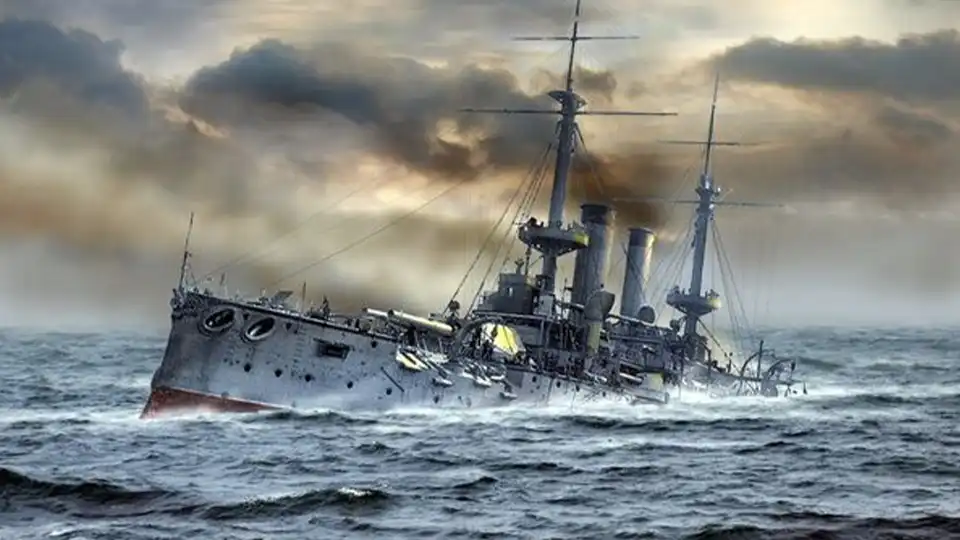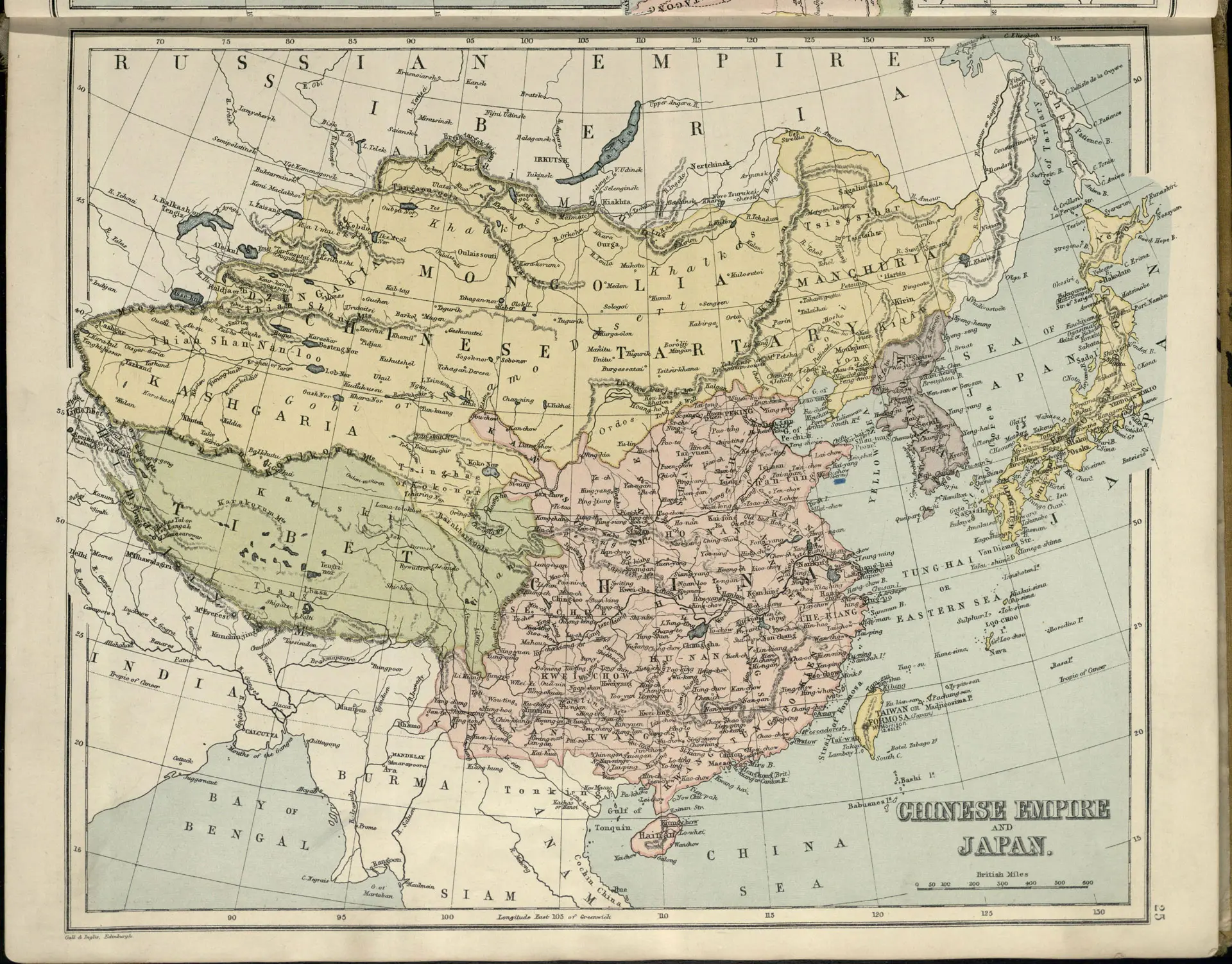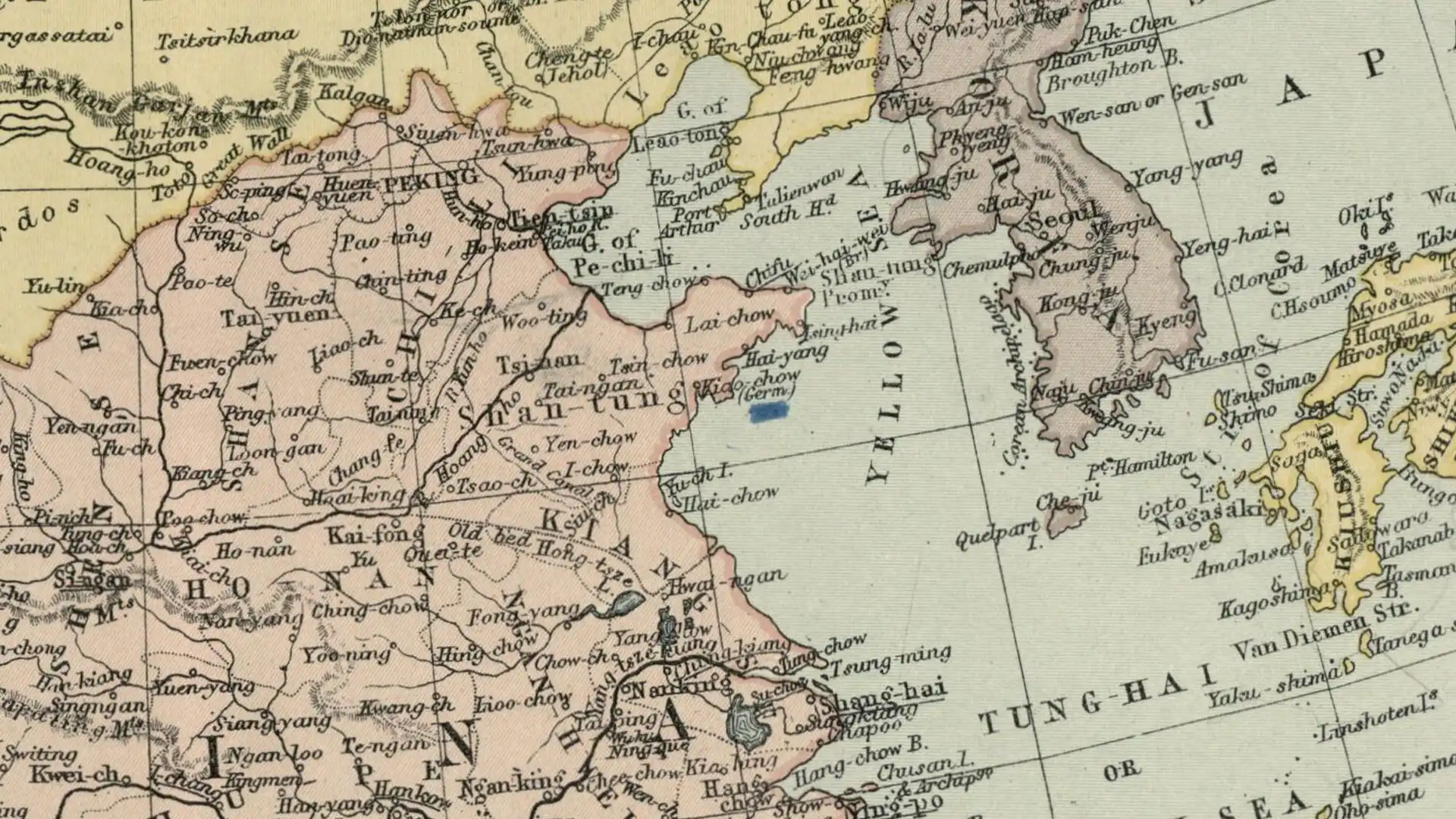The Marks
3 Calypso
This relates to the Russo-Japanese War, a major scene-setting event of the twentieth century. Tsar Nicholas of Russia sent his Navy to the other side of the world to support his land armies in the war. Its crushing defeat in the Battle of the Yellow Sea on 10 August 1904 was still in the future on 16 June, but Joyce found a way to anticipate it. He has Larry O’Rourke predict that the Russians would only be an eight o’clock breakfast for the Japanese.

The Battle of the Yellow Sea stands as the first time that two fleets fought each other, both using explosive shells and protected with armour plating - a grim start to the 20th century.
After their defeat, some Russian ships found refuge in the German concession of Kiao-Chow. This led to a diplomatic incident between Britain and Germany, probably the only time when Kiao-Chow made headlines in the UK. There is only one crayon mark on Plate 25 (Chinese Empire and Japan), which is under Kiao-chow. The odds are that this mark would have been made on 13 August 1904 or thereabouts. If our scenario for the Atlas is correct, the Atlas would still have been comfortably accommodated in Joyce’s large room in the McKernan house about that time. In that case, it is unlikely that anyone but Joyce would have made the mark.
The Texts
Line 2546 etc: He approached Larry O’Rourke’s. . . . Baldhead over the blind. Cute old codger. No use canvassing him for an ad. Still he knows his own business best. There he is, sure enough, my bold Larry, leaning against the sugarbin in his shirtsleeves watching the aproned curate swab up with mop and bucket. Simon Dedalus takes him off to a tee with his eyes screwed up. Do you know what I’m going to tell you? What’s that, Mr O’Rourke? Do you know what? The Russians, they’d only be an eight o’clock breakfast for the Japanese.
Marks in the Atlas: Kiao-Chow, the German concession on the Yellow Sea

